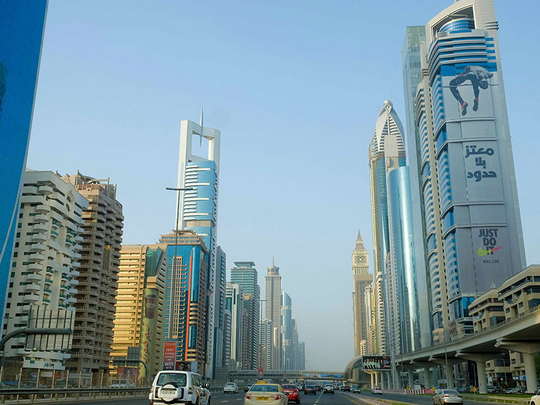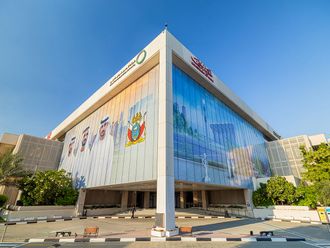
Dubai: Tenants in Dubai are not going to get much to cheer about their rents this year — more so if they are living outside of the city’s freehold communities. Rents, it seems, have become so immune to a soft economy, continuing job losses in key sectors and the fact that more homes are being delivered in the freehold zones.
Even with all the uncertainties stalking the economy during 2016, the overall rental index for Dubai is down by less than 8 per cent since mid-2014 compared with the 35 per cent crash — from a much less residential stock — witnessed between January 2009 to January 2011, which coincided with the worst phase of the global financial crisis, according to data from JLL, the consultancy.
“In our view, the overall residential market is now positioned close to the bottom of the current cycle, with virtually no change in average prices — or rentals — over recent months,” said Craig Plumb, Head of Research at JLL Mena. “The level of sales activity in the market has declined by more than prices (down around 30 per cent year-on-year), but has started to increase over the past couple of months. And sales activity is usually a good leading indicator of future price trends.”
An 8 per cent rental decline in the current economic climate is marginal at best, more so as rents across Dubai had firmed up significantly in the period between mid-2012 to mid-2014.
And in residential areas outside of the freehold areas, residents are even now confronting landlords demanding more. So, why is it that Dubai’s rental rates have remained so resilient?
Sure, trends in the rental market always lag those seen on the sales side of things. Even then, at the same time, they are mirroring some of the trends being seen in property sales.
“It is a more nuanced market this time around with luxury home prices having fallen by much more than those in the mid,” said Sameer Lakhani, Managing Director of Global Capital Partners. “Rental declines have reflected these.
“And in the case of certain mid-income communities, even flattening or have already started to rise.
“Dubai’s freehold market has predominantly been barbell-shaped, with supply concentrated at the top and the lower end with very little in between. It is the mid-end that has started to exert more influence and that has been one of the factors contributing to “sticky” rents.
“Of course, exogenous factors such as rental regulation (via the RERA Rental Index) have contributed to rental rates being more stable in this (down) cycle.”
Landlords, too, are playing it smart this time around, at least those who can afford to do so. Many are unwilling to cut their asking rates by too much, preferring instead to leave them vacant for longer. This is clearly visible in upscale neighbourhoods such as Jumeirah and off-Jumeirah enclaves, where new buildings still sport “For Rent” boards after months on the market. Other high-end areas — and properties — have also been undone by job losses among top executives.
But no one is saying that rentals — even in select locations — are going to fall to anywhere near 2009 levels.
And unlike in 2009 when no one was sure when an upturn would come, this time, Dubai’s landlords have a marker to go by — the Expo 2020 and the run up to it.
For some landlords in Dubai, they don’t even need to wait to get more out of their rented properties. “For my own five, I have been able to renew or rent out to fresh tenants at the same or even higher rates than that of the previous year,” said Kalpesh Sampat, Chief Operating Officer of SPF.
“By the second half of 2017, rental yields will indeed start going up as demand continues to increase at a very good rate.”
Sampat doesn’t buy the argument that new handovers in 2016 will have a material impact on 2017 rentals.
“Recent reports echoed that the market has been on a track for the lowest annual delivery of units in 2016 compared to the period between 2008 and 2015,” he said.
One early marker on what is in store for Dubai’s rents would be the upcoming updating of the Rera Rental Index. Market sources suggest that the index — which is updated annually — is unlikely to show sharp variations, thus empowering landlords — especially in the non-freehold areas — to stick with their demands.
More rental homes are being built in emerging areas such as Nad Al Sheba and Jebel Ali by master-developers such as Nakheel. Dubai Properties too is focusing on upgrading its leasing portfolio as is Meydan Group. Also likely to have a decisive role to play in setting Dubai’s rental dynamics would be the handover of the 2,000 units this year from Nshama at its Town Square development off Mohammad Bin Zayed Road.
But Dubai’s property market dynamic is such that any new supply seems to get instantly absorbed. Even the downturn of 2009-11 turned into an Arab Spring-inspired property buying spree from 2012 onwards. And then followed the Expo 2020 win inspired speculative buying that led to the Central Bank intervention with new mortgage thresholds. Dubai Land Department raised registration rates to 4 per cent to try and cool off such buying.
All through these changes, Dubai’s rental rates moved within a narrow band on the downside. (And when on the upside, no such limitations are in place apart from the upper ceiling set within the Rera Rental Index.) For many Dubai residents, 2016 offered slippery prospects in the job market or what their businesses could achieve. There were many businesses that fell by the wayside burdened by debt and unpaid receivables. All through this morass, their rental bills — whether for their homes or workplaces — remained steadfastly high. Any downward revision did not go deep enough to be of much help in meeting their expenses.
This year may well be a repeat of that on their rental bills.
The ups and downs on Dubai rents
* The overall rental index for Dubai’s freehold clusters saw a decline by 4 per cent between January to November 2016. But rental levels increased “marginally” in four of the 28 communities tracked by Reidin. “The only area to experience a significant increase in rentals over the past 11 months was villas in Al Furjan (Jebel Ali), that saw average rents increase by 7 per cent,” said Craig Plumb of JLL Mena. “Marginal increases were recorded in three other communities — Dubai Silicon Oasis, Jumeirah Golf Estate and the Lakes.”
* The greatest fall in rentals over the past 11 months were at the International City, Arabian Ranches and Palm Jumeirah (all recording decline around 8 per cent). “It is always difficult to pick the precise bottom of any market cycle until after the event, but JLL believe there is only limited further downside in this cycle and that both prices and rentals will finish 2017 at higher levels than at the beginning of the year in most locations,” said Plumb. “This recovery is however expected to be relatively modest, with rental increases being limited to single digits (less than 10 per cent) in most locations.”











